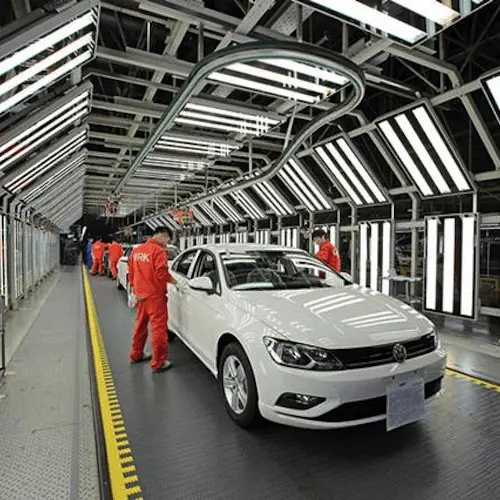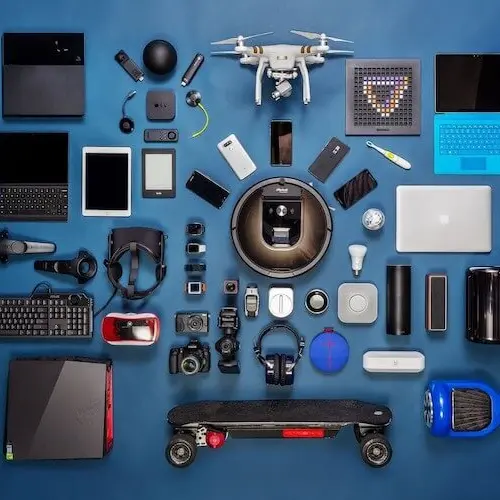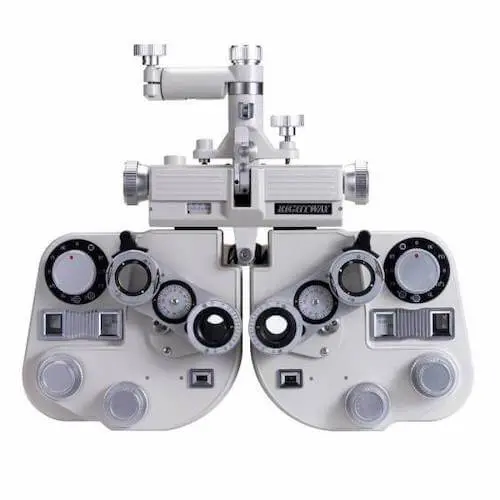Photo Etching

What is Photo etching?
Photo chemical etching is a high-quality, fast turn-around, and economical manufacturing process for precision and detailed metal parts such as screens, shields, grids, washers RFI/EMI Shielding, Filters, Lead Frames, Encoder Disks, Buss Bar, Flat Springs, Heat Sinks, Drive Bands, Electrical Contacts, Ribbon Shields, Laminates, Backplates, EMP grids, Signage, Plaques.
Page Navigation
The types of metals for photo etching
TMN is your trusted expert in photo etching, offering a wide range of services thanks to our mature etching technology, advanced automated equipment, and extensive inventory of metal materials. Here are the types of photo etching we specialize in:
Stainless Steel Etching:
We can precisely etch stainless steel surfaces to meet your exacting requirements for detail and quality.
Aluminum Etching:
With our advanced technology and equipment, we can efficiently etch aluminum materials to fulfill various needs.
Titanium Etching:
Whether it's etching titanium alloys or other titanium materials, we provide high-quality, high-precision etching services.
Copper Etching:
Our technology and equipment can easily handle the etching of copper materials, providing reliable support for your projects.
Nickel Etching:
Whether it's pure nickel materials or nickel alloys, we can achieve precise etching, ensuring the quality and efficiency of your products.
No matter which material your project requires etching for, TMN can provide you with professional solutions to ensure your needs are met, while guaranteeing high-quality and efficient service.
Our Photo Chemical Etching Process
Our Photo Chemical Etching (PCE) process consists of several important steps.
Each step is a critical prerequisite to the next.

Metal Selection
Choose the appropriate metal material from our extensive inventory of over a hundred different types of metal sheets, ranging in thickness from 0.07mm to 1.5mm. Once selected, the metal is cut to the required dimensions.

Metal Cleaning
Chemically clean the cut metal to ensure the surface is free from any impurities. This step is crucial as impurities can hinder the application of photoresist and adversely affect the quality of the finished etched parts.

Coating
Apply a layer of UV-sensitive photoresist to the cleaned metal using both heating and pressing methods to coat both sides of the sheet. Any excess coating is trimmed from the board.

Exposure With Etching Film
Use a UV light source to print the desired image from the image tool onto the metal sheet.

Developing
Expose the printed metal sheet to a developer solution for chemical development. The chemicals wash away the unexposed soft areas while preserving the shape of the components.
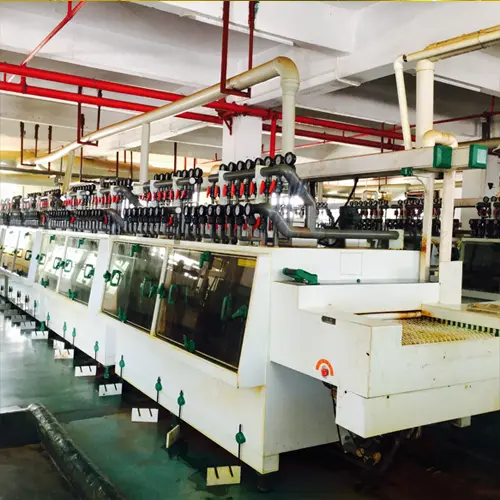
Photochemical Etching
Place the metal sheet on a conveyor belt in the etching machine. The etch rate is calculated based on the metal thickness and etching speed, which is determined by the metal's chemical composition. Test metal sheets are etched and measured, and once the target dimensions are achieved, the speed is set for the remaining metal sheets, with regular sample measurements to ensure consistent machine settings.

Stripping
Rinse and remove the photoresist coating from the metal sheet before proceeding to final inspection. Subsequent secondary operations, such as forming, plating, or heat treatment, can then be carried out.

Inspection and Finishing
Perform QA inspection using Coordinate Measurement Machines (CMM) to check key dimensions agreed upon with the customer. Conduct visual inspections of the finished etched parts and perform final checks to ensure they meet the customer's aesthetic expectations. Inspections are carried out according to various procedures tailored to meet specific customer requirements.
Sample Display
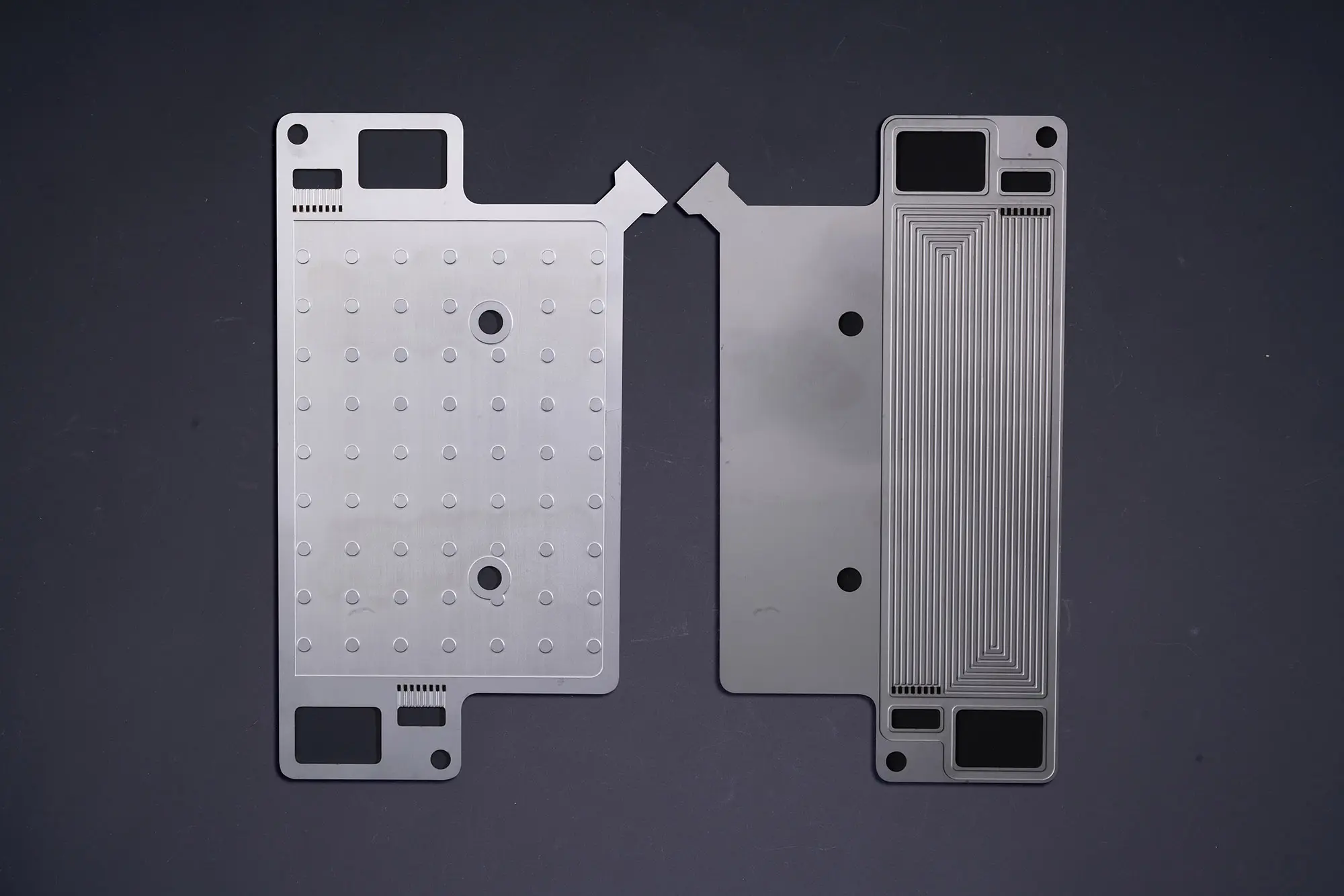

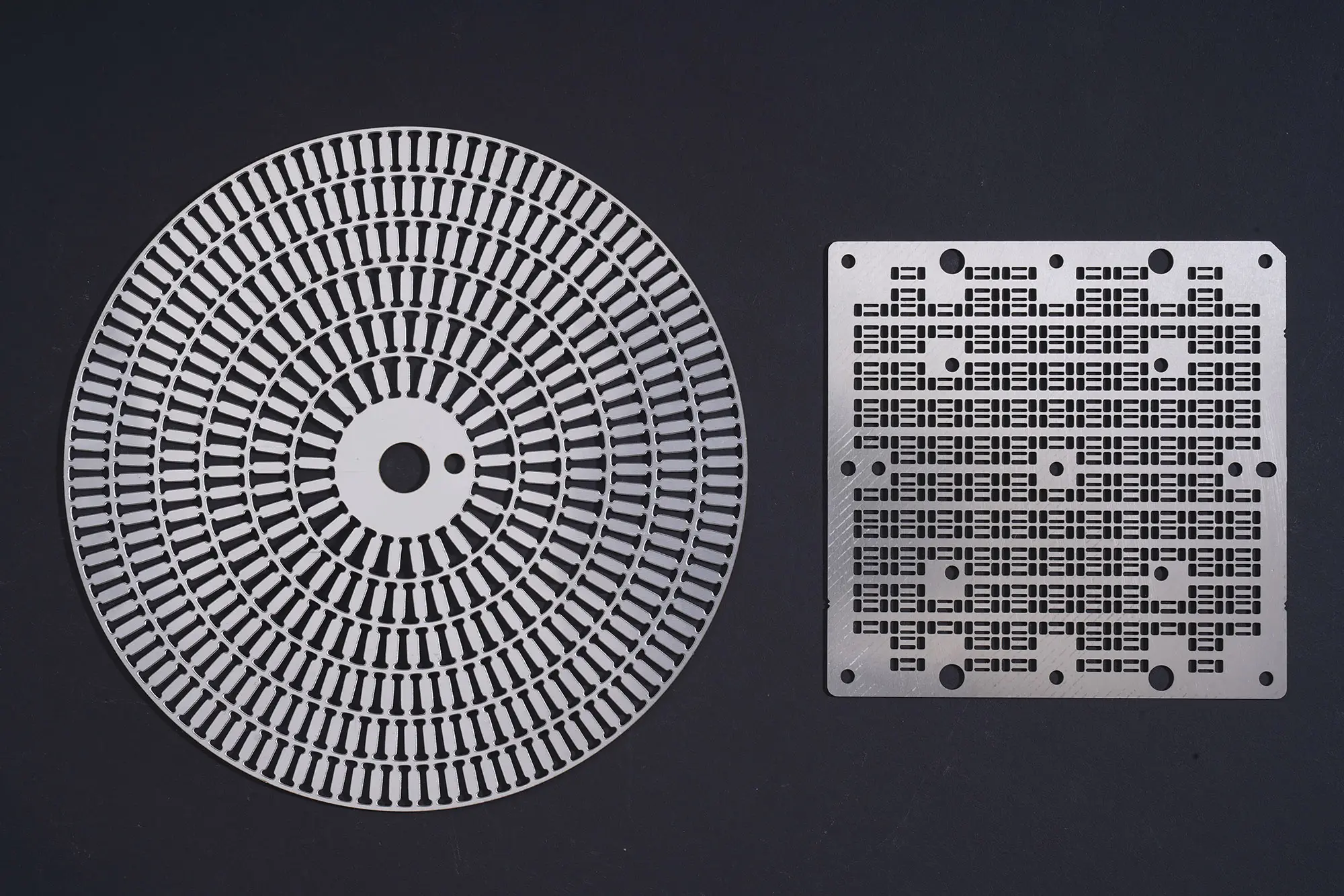


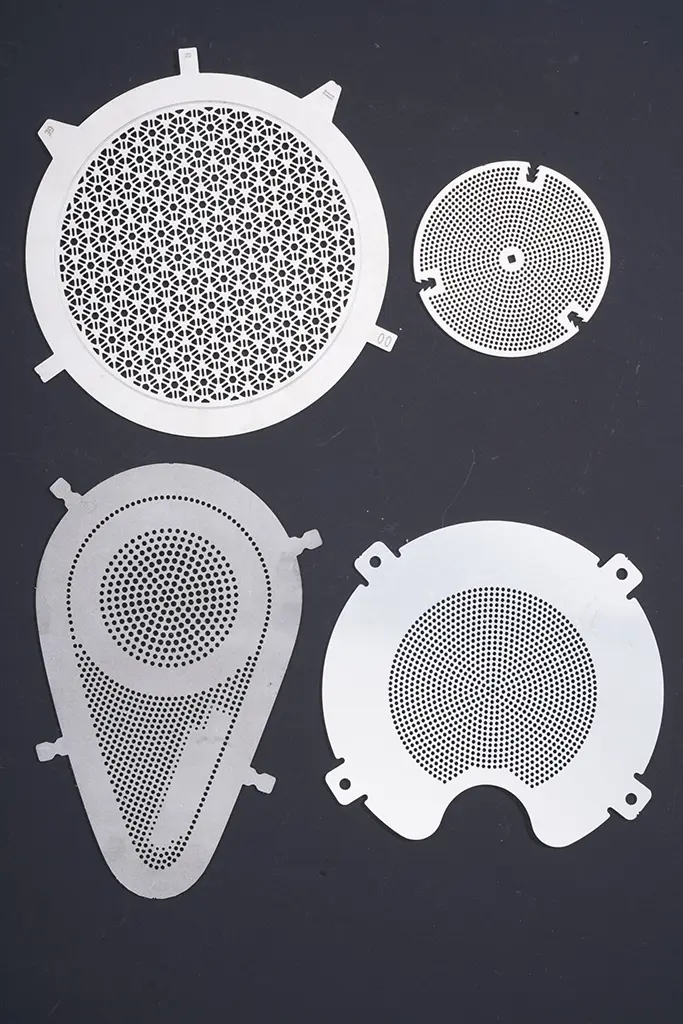




Photo etching advantages
Equipped with cutting-edge facilities operating under ISO 9001:2015 standards, we are capable of producing up to 1800 square meters daily. Specializing in ultra-thin metal etching down to 0.02mm, we ensure top-notch quality in every process. With over a hundred metal types in stock, we offer the perfect substrate for any application. Trust us for superior photo-etched components that exceed expectations.
Advantages of Photochemical Etching
Unlimited Complexity at a Fixed Price
Achieve intricate designs and complex geometries without increasing costs.

No Expensive Hard Tooling Required
Eliminate costly expenses associated with molds or dies.
Superfast, Low-Cost Design Iterations
Enable rapid and cost-effective design adjustments and prototyping.

High Precision to ±0.025mm
Ensure parts are produced with unparalleled accuracy and consistency.

Suitable for Virtually Any Metal
Accommodate a wide range of materials, from common alloys to exotic metals.

No Burrs
Produces clean, burr-free edges, eliminating the need for additional finishing processes and ensuring smoother surfaces.
Our photo-etched metal materials

Stainless Steel Metals
Models: 304 Stainless Steel, 316 Stainless Steel, 430 Stainless Steel,, etc.
Hardness Range: Approximately between 20 to 40 HRC
Thickness Range: Between 0.5mm to 5mm

Aluminum Alloy Metals
Models: 1000 Series (1100, 1200, etc.), 2000 Series (2024, 2014, etc.), 3000 Series (3003, 3004, etc.), etc.
Hardness Range: Generally between 15 to 120 HV
Thickness Range: Between 0.1mm to 10mm

Copper Metals
Models: Pure Copper, Brass (C26000/C27000), Bronze (C51000/C5400), Phosphor Bronze (C10100/C10600)
Hardness Range: 30 to 100 HV
Thickness Range: Between 0.1mm to 10mm

Titanium Alloy Metals
Models: Ti-6Al-4V (TC4), Ti-6Al-2Sn-4Zr-2Mo (TC11), Ti-3Al-2.5V (TA3), etc.
Hardness Range: 150 to 400 HV
Thickness Range: Between 0.5mm to 50mm

Nickel Metals
Models: Pure Nickel (Ni200), Nickel-Iron Alloys, Nickel-Chromium Alloys, Nickel-Titanium Alloys
Hardness Range: 100 to 600 HV
Thickness Range: Between 0.1mm to 10mm
Photo etching industry solutions
TMN is a leading global photo etching service company with clients spread across Europe, America, and Southeast Asia. Our photo etching services cater to a diverse range of industries, including but not limited to:
Aerospace:
We provide high-precision and reliable photo etching processes to meet the stringent quality and performance requirements of aerospace components.
Automotive:
In the automotive industry, we manufacture precision automotive parts using photo etching technology, providing crucial support to automotive manufacturers.
Industrial:
Various metal parts are required in the industrial sector, and our photo etching services meet the industry's demands for accuracy and reliability.
Medical:
Medical equipment requires high-precision components, and our photo etching solutions ensure the performance and safety of medical devices.

Defense:
With strict requirements for components, our photo etching technology meets the high precision and reliability demands of the defense industry.
Electronics:
We provide precision photo etching for electronic products, including circuit boards and other electronic components.
Optical Parts:
The optical industry requires high-precision optical components, and our photo etching technology produces parts that meet optical requirements.
Circuit Boards:
Circuit board manufacturing requires high-precision processing, and our photo etching services meet the industry's demands for accuracy and performance.
Regardless of the industry, TMN offers professional photo etching solutions to support our clients' projects, ensuring that product quality and performance are of the highest standard.
Photochemical Etching (PCE) VS Traditional Sheet Metal Processing
Cost:
Photo etching often offers lower costs due to reduced tooling expenses and efficient material usage.
Metal:
Both methods work with various metals, but photo etching is particularly suitable for thin metals.
Hardness:
Traditional sheet metal processing may cause hardness variations, while photo etching maintains material integrity.
Pressure:
Photo etching involves minimal mechanical force, reducing stress on the metal compared to traditional methods.
Burrs:
Photo etching produces burr-free edges, eliminating the need for secondary deburring processes.
Tooling and Design Changes:
Photo etching requires less tooling and facilitates rapid design iterations compared to traditional methods.
Lead Time:
Photo etching typically offers shorter lead times due to streamlined processes and faster design iterations.
Thickness Tolerance:
Photo etching can achieve tight thickness tolerances, crucial for precision applications, whereas traditional methods may have more variation.
Common Photo etching module
With our photo etching service, we can cater to both one-off prototypes and high-volume production requirements, enabling us to serve a diverse range of specialist component applications.



